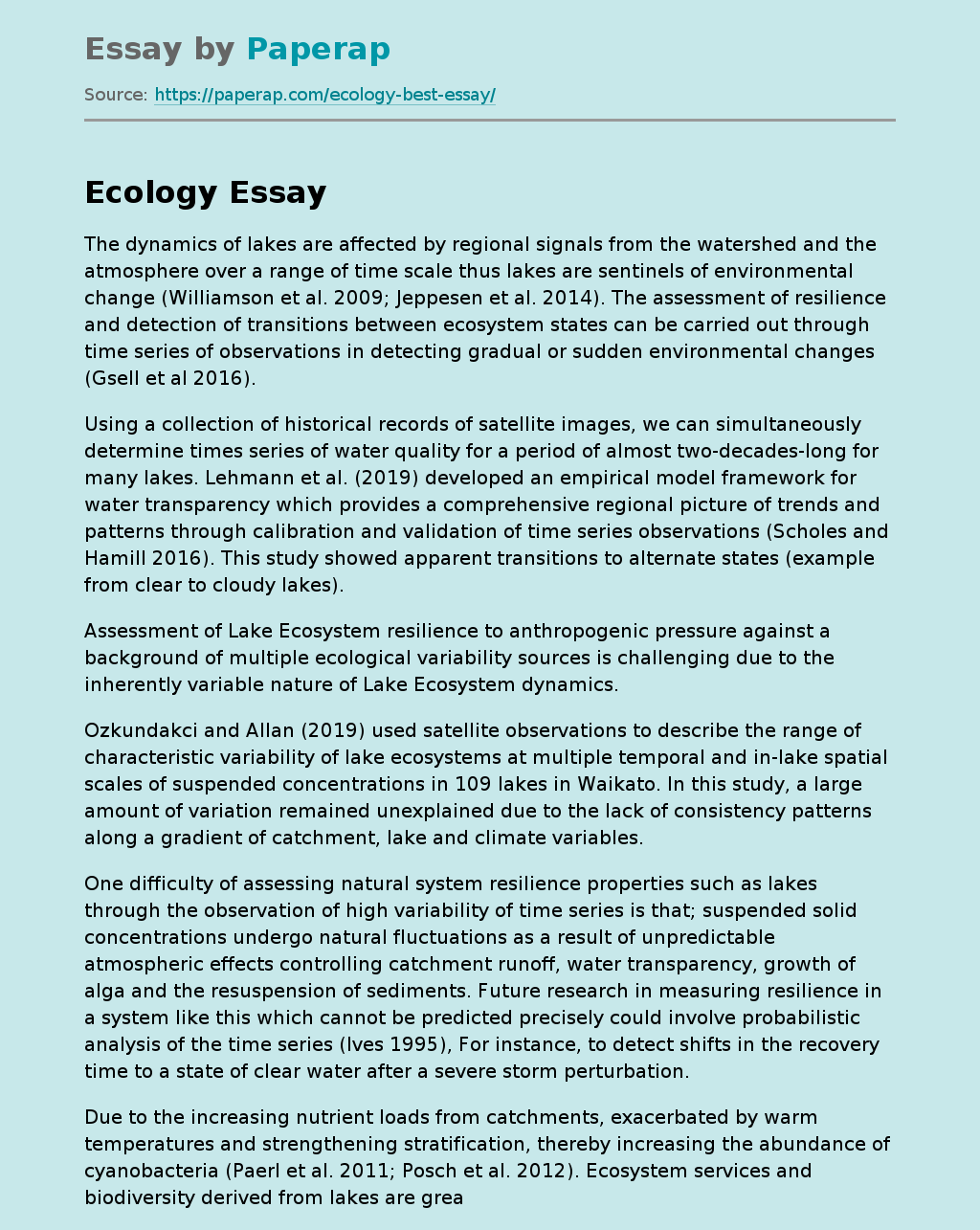Ecology of Lakes and Ecosystem Transitions
The following sample essay on “Ecology”: the dynamics of lakes and the assessment of resilience and detection of transitions between ecosystem
The dynamics of lakes are affected by regional signals from the watershed and the atmosphere over a range of time scale thus lakes are sentinels of environmental change (Williamson et al. 2009; Jeppesen et al. 2014). The assessment of resilience and detection of transitions between ecosystem states can be carried out through time series of observations in detecting gradual or sudden environmental changes (Gsell et al 2016).
Using a collection of historical records of satellite images, we can simultaneously determine times series of water quality for a period of almost two-decades-long for many lakes. Lehmann et al. (2019) developed an empirical model framework for water transparency which provides a comprehensive regional picture of trends and patterns through calibration and validation of time series observations (Scholes and Hamill 2016). This study showed apparent transitions to alternate states (example from clear to cloudy lakes).
Assessment of Lake Ecosystem resilience to anthropogenic pressure against a background of multiple ecological variability sources is challenging due to the inherently variable nature of Lake Ecosystem dynamics.
Ozkundakci and Allan (2019) used satellite observations to describe the range of characteristic variability of lake ecosystems at multiple temporal and in-lake spatial scales of suspended concentrations in 109 lakes in Waikato. In this study, a large amount of variation remained unexplained due to the lack of consistency patterns along a gradient of catchment, lake and climate variables.
One difficulty of assessing natural system resilience properties such as lakes through the observation of high variability of time series is that; suspended solid concentrations undergo natural fluctuations as a result of unpredictable atmospheric effects controlling catchment runoff, water transparency, growth of alga and the resuspension of sediments.
Future research in measuring resilience in a system like this which cannot be predicted precisely could involve probabilistic analysis of the time series (Ives 1995), For instance, to detect shifts in the recovery time to a state of clear water after a severe storm perturbation.
Due to the increasing nutrient loads from catchments, exacerbated by warm temperatures and strengthening stratification, thereby increasing the abundance of cyanobacteria (Paerl et al. 2011; Posch et al. 2012). Ecosystem services and biodiversity derived from lakes are greatly impaired by toxins produced by cyanobacteria (Kudela et al. 2015). Also, cyanobacteria directly reduce lake resilience by further enhancing phytoplankton proliferation by tapping into pools of unavailable nitrogen and phosphorus (Cottingham et al. 2015). Hence monitoring the abundance of cyanobacteria is crucial for the ecosystem as well as human health.
Ecology of Lakes and Ecosystem Transitions. (2019, Dec 11). Retrieved from https://paperap.com/ecology-best-essay/

